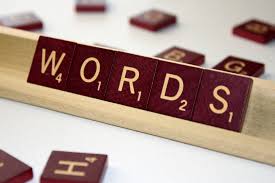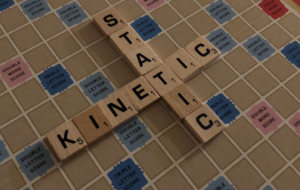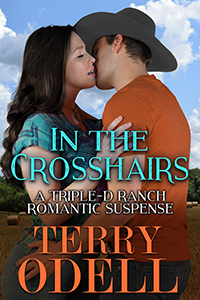“Who is Dieter Rams?” you ask. “And how do his ten principles of good design apply to writing and publishing books?”
I wondered the same when I opened Farnam Street’s weekly newsletter on Sunday morning (if you’re not an FS subscriber, you’re missing out) and saw the headline Less but Better: Dieter Rams’ 10 Principles. I clicked and read a short article. It had such an impact that I printed and dissected it with my red pen and yellow highlighter.
“Man! Does this ever apply to writing and publishing books!” I said out loud. My wife, Rita, ignored me. She stayed glued to one of her Apple devices. “This is good stuff,” I said as I read a Dieter Rams quote. Everything interacts and is dependent on other things. We must think more thoroughly about what we are doing, how we are doing it, and why we are doing it.
 Dieter Rams is German and, true to being German, is quality-orientated and detail-driven. Rams, now 89, was schooled in architecture but transformed into one of the world’s leading consumer product designers. His ingenuity and vision were instrumental in thousands of items sold by giants like Braun, Gillette, and European furniture maker Vitsoe.
Dieter Rams is German and, true to being German, is quality-orientated and detail-driven. Rams, now 89, was schooled in architecture but transformed into one of the world’s leading consumer product designers. His ingenuity and vision were instrumental in thousands of items sold by giants like Braun, Gillette, and European furniture maker Vitsoe.
Rams trailblazed the path for product designs to be more than beautification of consumer products focused on marketing purposes. Design, according to Rams, is innately human and serves as one of the foundational underpinnings of society as a whole. Rams observed: You cannot understand good design if you do not understand people. Therefore, design should involve a moral and ethical responsibility and designers should understand and consider the societal implications of their work, using design as a force for positive change and human preservation.
“Wenniger, aber besser,” said Dieter Rams. It translates to, “Less, but better.”
Right now, I imagine every Kill Zone writer and publisher is thinking Yep. Heard that advice many times. Less is More. And it’s some of the best writing advice there is with the economizing of words to make our writing and publishing simple, clear, and effective.
Rams stayed with Braun from 1955 to 1995 which included the transition from Braun to Gillette. He spent another decade freelancing with Vitsoe and, during his career at these companies, remained the prime design influence behind Steve Jobs and Jonathon Ive to shape the future of all Apple products. Yes, Rita’s Apple devices are based on Dieter Rams’ ten design principles.
So what are these ten design principles and how do they apply to book writing and publishing? Let’s do a dive into what Dieter Rams said about good design followed by my comments:
1. Good design is innovative. The possibilities for innovation are not, by any means, exhausted. Technological development is always offering new opportunities for innovative design. But innovative design always develops in tandem with innovative technology, and can never be an end in itself.
Me – We’ve seen monstrous changes in our storytelling delivery over the past decade, and there’s a lot more coming at us fast. Print on demand. Ebooks. Audio. Interactive. Editing apps. And artificial intelligence. We, as writers and publishers, need to be innovative.
2. Good design makes a product useful. A product is bought to be used. It has to satisfy certain criteria, not only functional but also psychological and aesthetic. Good design emphasizes the usefulness of a product whilst disregarding anything that could possibly detract from it.
Me – Our stories must be useful. Meaningful and memorable. We must satisfy our reader psychologically and visually. We must respect our reader’s time and leave them feeling they got good value—something useful.
3. Good design is aesthetic. The aesthetic quality of a product is integral to its usefulness because products we use every day affect our person and our well-being. But only well-executed objects can be beautiful.
Me – Aesthetics, in our products (yes, books are consumer products), goes beyond the mechanics of cover graphics. Aesthetics goes beyond the interior layout of fonts and spacing. Aesthetics goes to the heart of the story where the reader sees the story in their mind.
4. Good design makes a product understandable. It clarifies the product’s structure. Better still, it can make the product talk. At best, it is self-explanatory.
Me – Less is more. Understandable. Can the reader follow what’s going on? Are they turning the pages ahead and not back?
5. Good design is unobtrusive. Products fulfilling a purpose are like tools. They are neither decorative objects nor works of art. Their design should therefore be both neutral and restrained, to leave room for the user’s self-expression.
Me – Get the writer out of the reader’s eyes. We’ve all absorbed that advice. Book products are tools for the mind—for the reader’s self-expression. Suspension of disbelief 101.
6. Good design is honest. It does not make a product more innovative, powerful, or valuable than it really is. It does not attempt to manipulate the consumer with promises that cannot be kept.
Me – Keep your promise to the reader. That’s another timeless tip. Deliver on what you say.
7. Good design is long-lasting. It avoids being fashionable and therefore never appears antiquated. Unlike fashionable design, it lasts many years – even in today’s throwaway society.
Me – A beauty of digital publishing is longevity. Digital products are evergreen which gives two sides to the coin. One is they stay on the shelves as long as the server survives. Two is they reflect trendy styles.
8. Good design is thorough down to the last detail. Nothing must be arbitrary or left to chance. Care and accuracy in the design process show respect towards the user.
Me – This principle hits home about book writing and publishing. We must output the most professional piece we can. That includes more than the story itself. Cover. Editing. Layout. And, yes, marketing.
9. Good design is environmental-friendly. Design makes an important contribution to the preservation of the environment. It conserves resources and minimizes physical and visual pollution throughout the lifecycle of the product.
Me – Is there anything more environmentally friendly than an ebook or an audiobook? Compared to a print book where trees die and ink pollutes? I’m not against the print book industry by any means. I’m just sayin’.
10. Good design is as little design as possible. Less, but better – because it concentrates on the essential aspects, and the products are not burdened with non-essentials. Back to purity, back to simplicity.
Me – Wenniger, aber besser.
What about you Kill Zone writers and publishers? How do you see Dieter Rams’ ten design principles fitting in with your work? Can you add other principles that help us to be better at writing and publishing?
———
 Garry Rodgers is a retired homicide detective with a second career investigating deaths as a coroner. Now, he’s a crime writer and indie publisher with some twenty works in the public arena.
Garry Rodgers is a retired homicide detective with a second career investigating deaths as a coroner. Now, he’s a crime writer and indie publisher with some twenty works in the public arena.
Garry also hosts a popular bi-weekly blog on his DyingWords.net website and flirts with the feed on Twitter @GarryRodgers1. Vancouver Island on Canada’s southwest coast is home to Garry Rodgers.
Watch for Garry’s new series City Of Danger coming this summer. 2022.



 It may be the most famous (infamous?) case of writer’s block in the annals of American lit: George R. R. Martin is having trouble completing his epic fantasy series A Song of Ice and Fire (of which A Game of Thrones is the first volume). It’s been over ten years since the last book, A Dance with Dragons, came out, and there is no pub date in sight for the next one, titled The Winds of Winter.
It may be the most famous (infamous?) case of writer’s block in the annals of American lit: George R. R. Martin is having trouble completing his epic fantasy series A Song of Ice and Fire (of which A Game of Thrones is the first volume). It’s been over ten years since the last book, A Dance with Dragons, came out, and there is no pub date in sight for the next one, titled The Winds of Winter. 

 Last week, I had the honor of spending an hour or so with David Temple on his excellent podcast,
Last week, I had the honor of spending an hour or so with David Temple on his excellent podcast, 
 Garry Rodgers is a retired homicide detective with a second career as a coroner—pretty much Doctor Death for over thirty years. Now, Garry is a caped crime writer who fights villainous words rather than crafty crooks and deadly stiffs.
Garry Rodgers is a retired homicide detective with a second career as a coroner—pretty much Doctor Death for over thirty years. Now, Garry is a caped crime writer who fights villainous words rather than crafty crooks and deadly stiffs.

